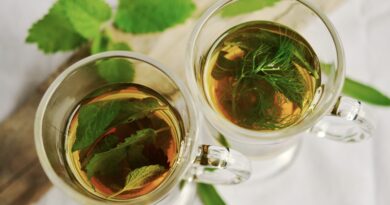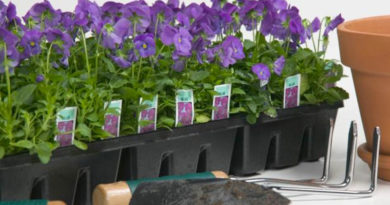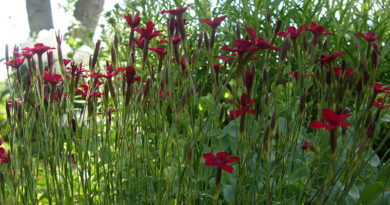Pollinators in your Garden
Populations of many pollinators have declined seriously across North America according to a recent United States National Academy of Science report. In return for a little pollen and nectar, pollinators carry pollen from one plant to another of the same species. This transfer leads to fertilization and the production of fruit and seeds. While some pollen is dispersed by the wind, eighty per cent of our flowering plants in our garden rely on pollinators to transfer the pollen.
Without pollination our food supply and the natural ecosystem are threatened. This includes many of our food crops such as apples, pears, blueberries, raspberries, strawberries, soybeans, sunflowers, melons, cucumbers and tomatoes. Pollinators also play a fundamental role in our ecosystem. Plants in the wild rely on pollinators for cross-pollination and animals prey on the pollinators themselves for food.
And we’re not just talking about the honey bee here. Two hundred thousand species of animals act as pollinators. Of those, about 1,000 are hummingbirds, bats and small animals. The rest are insects such as beetles, flower flies, bees, ants, wasps, butterflies and moths.
The main culprits behind the decline in pollinators are habitat loss and pesticide, says one of the study’s authors, University of Guelph Environmental Biologist, Dr. Peter Kevan. For honey bees and bumble bees, parasites and disease also play a role.
The good news is that we can all make a difference by practising pollinator-friendly gardening.
Here are some ways you can encourage pollinators in your garden:
1. Plant native and pollinator-friendly plants that provide food and nesting materials. Avoid highly selected horticultural varieties which may lack pollen and nectar. Echinacea, bluebells, forget-me-nots, butterfly weed and butterfly bush are some of the flowers recommended by Kevan. (For more suggestions, go to Greenway Blooming Centre’s web site at www.greenwaybloom.com.)
2. Design your flower gardens so there is a continuous succession of plants flowering from spring through fall. Choose plants which provide both nectar for the adult as well as food for the larval stage. Plant flowers of varying heights in clumps of at least four plants to make it easier for the pollinators to find them.
3. Supply water. A shallow saucer or bird bath with a flat rock in it makes an ideal location for butterflies and other pollinators to land. Replace the water daily to prevent mosquito larvae from hatching.
4. Provide shelter. Windbreaks make it easier for pollinators to land.
5. Leave some natural areas for nesting sites.
6. Where possible, eliminate pesticide use, especially insecticides. If using pesticides, use the right amounts under the right conditions. Only spray the amounts specified on calm days to avoid drift into natural areas. When feasible, spot spray instead of applying pesticides to an entire area.
Mexico, the United States and Canada are cooperating as this is a cross-border problem. Some pollinators, such as hummingbirds and monarch butterflies migrate, from one country to another. The North American Pollinator Protection Campaign has set up a web site as a gateway for pollinator-friendly gardening information at www.nappc.org.




